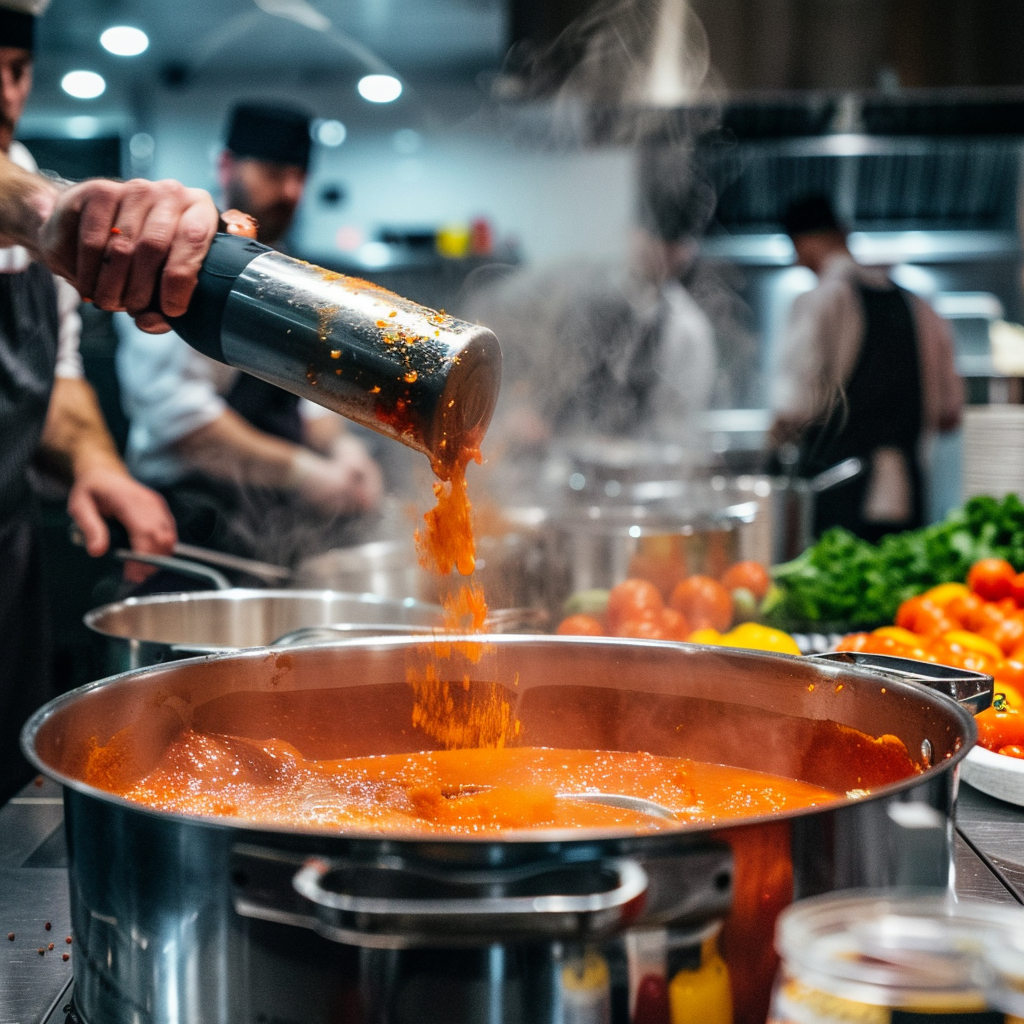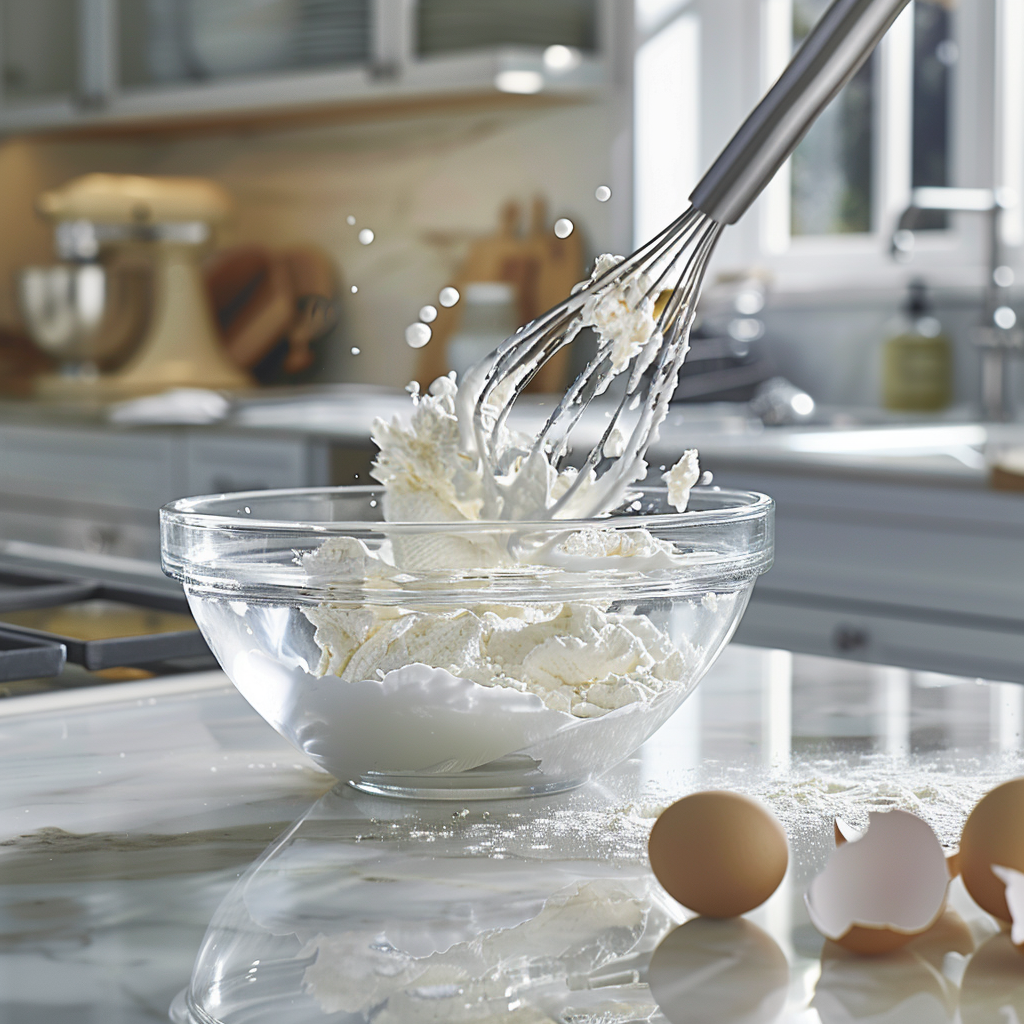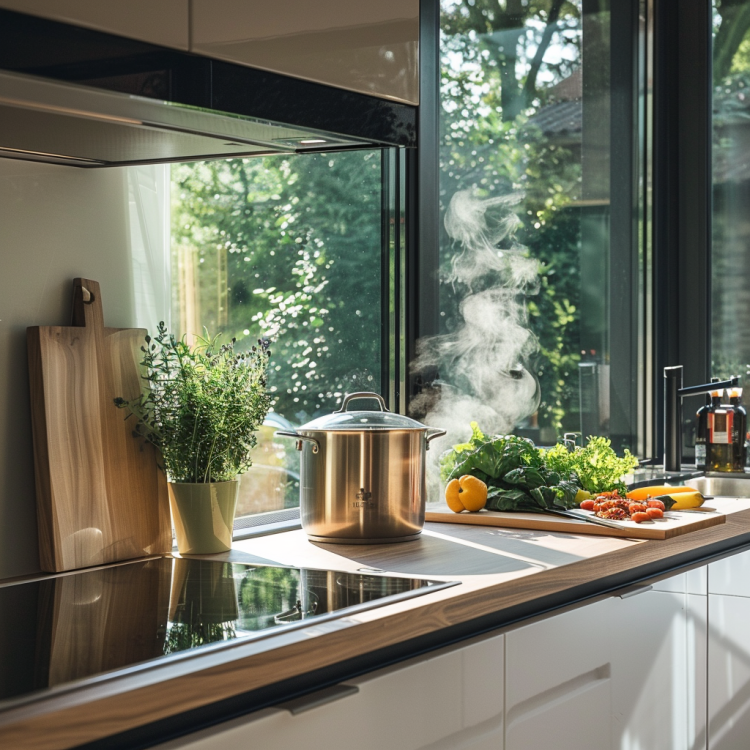
Problem: When you’re in the kitchen, you often find yourself switching between multiple appliances—blenders, mixers, food processors—all of which can clutter your workspace. Finding a versatile tool that simplifies tasks can be challenging.
Agitation: Imagine the time and effort you could save if you had one compact appliance that could handle multiple kitchen tasks, from blending soups directly in the pot to making smoothies in a glass. You’re likely tired of cleaning up after using different tools for simple jobs.
Solution: A stick blender, also known as an immersion blender, could be your ultimate kitchen companion. It’s a handheld device that can quickly blend, purée, and emulsify directly in your cooking vessel, saving you time and reducing the mess.
A stick blender, also known as an immersion blender, is a versatile kitchen tool designed for quick and efficient blending tasks. Unlike traditional blenders that require you to pour ingredients into a separate container, a stick blender allows you to blend ingredients directly in the pot, bowl, or even a glass. This makes it particularly useful for preparing soups, sauces, smoothies, and even baby food without the hassle of transferring liquids between containers.

The key advantage of a stick blender is its convenience. It’s compact, easy to use, and can be quickly deployed for a variety of tasks. Whether you’re looking to blend hot soup directly in the pot or whip up a quick smoothie without having to dirty a large blender, a stick blender is the tool for the job. Its lightweight design and simple operation mean it’s not just for professional chefs—anyone can use it with ease. Furthermore, many stick blenders come with various attachments, like whisking or chopping accessories, which expand their functionality even further.
In addition to blending, stick blenders can be used for puréeing vegetables, making mayonnaise, or even whipping cream. They are especially handy when you need to blend small quantities or when working with delicate ingredients that don’t require the power of a full-sized blender.
Stick blenders are also favored for their ease of cleaning. Since you’re not transferring hot liquids from pot to blender to pot again, there’s less mess to deal with. Many models come with detachable shafts that can be easily washed by hand or in a dishwasher.
In summary, a stick blender is an indispensable tool for anyone looking to simplify their kitchen tasks, offering a quick and convenient way to blend, purée, and emulsify directly in the container you’re using, saving you both time and effort.

What Is the Difference Between a Blender and a Stick Blender?
Imagine you’re making a smoothie. Do you need to grab the heavy countertop blender, or could a stick blender handle the job just as well? Keep reading to find out the key differences between these two handy kitchen tools.
When comparing a traditional blender and a stick blender, the main difference lies in their design and intended use. A traditional blender, also known as a countertop blender, is a larger appliance with a motorized base and a tall container or jar where you place your ingredients. It’s powerful and can handle a wide range of tasks, from crushing ice to making large batches of smoothies or soups. Its larger size and capacity make it ideal for preparing meals for multiple people or for tasks that require significant blending power.
On the other hand, a stick blender is a handheld device that allows you to blend ingredients directly in the container you’re using, such as a pot, bowl, or glass. This eliminates the need to transfer ingredients to a separate blending jar, making the process faster and reducing the amount of cleanup. Stick blenders are generally less powerful than traditional blenders, which means they may not be as effective for tasks like crushing ice or blending very hard ingredients.
However, the compact size and portability of a stick blender make it more convenient for smaller tasks or when working with hot liquids, as you can blend directly in the pot without having to wait for the mixture to cool. Additionally, stick blenders are easier to store due to their smaller size and often come with attachments that can expand their versatility, such as whisking or chopping tools.
In terms of power, traditional blenders typically have stronger motors and can operate at higher speeds, making them more suitable for heavy-duty tasks. Stick blenders, while versatile, may struggle with tougher ingredients and are better suited for blending softer foods, pureeing, and emulsifying.
In summary, the choice between a traditional blender and a stick blender depends on your specific needs. If you often prepare large quantities or need to blend tough ingredients, a traditional blender might be the better option. However, for quick, small tasks and ease of use, a stick blender offers unmatched convenience.

What Are the Disadvantages of a Stick Blender?
While stick blenders offer many conveniences, are there downsides that you should be aware of before purchasing one? Let’s dive into the potential disadvantages.
Despite their many advantages, stick blenders do come with certain limitations that might make them less suitable for some tasks. One of the primary disadvantages of a stick blender is its power. Most stick blenders are less powerful than traditional blenders, which means they might struggle with tough ingredients like ice, frozen fruits, or fibrous vegetables. If your recipes often call for blending hard or dense ingredients, a stick blender may not provide the necessary power to achieve a smooth consistency.
Another drawback is the smaller blade size. The blades on a stick blender are typically smaller and less aggressive than those on a traditional blender, which can lead to longer blending times for certain tasks. This smaller blade also means that stick blenders are not ideal for making large batches of food at once. If you’re trying to blend a large quantity, you may have to work in multiple batches, which can be time-consuming and inconvenient.
Stick blenders can also be less effective at achieving a uniform blend when working with larger volumes of liquid. Since you manually move the blender around, it can be challenging to ensure that all parts of the mixture are evenly blended, particularly if you’re working with a deep pot or a large quantity of ingredients.
In terms of durability, stick blenders may not last as long as traditional blenders, especially if they are used frequently for tasks that push their power limits. Over time, the motor may wear out faster than that of a more robust, traditional blender.
Lastly, while stick blenders are convenient for small tasks, they might not replace the need for other appliances like food processors or stand mixers if your kitchen work involves more complex or heavy-duty tasks. For example, while you can use a stick blender to whip cream, it may not achieve the same level of aeration as a stand mixer, particularly for larger quantities.
In conclusion, while stick blenders offer significant convenience and versatility, their limitations in power, blade size, and durability may make them less suitable for heavy-duty tasks or large-scale food preparation. If your kitchen tasks require more robust blending capabilities, a traditional blender or another specialized appliance might be necessary.
Can a Stick Blender Work Like a Food Processor?
Can you replace your bulky food processor with a more compact stick blender? Discover whether a stick blender can truly handle food processing tasks.
A stick blender, while highly versatile, is not a direct replacement for a food processor. Food processors are designed to handle a wide variety of tasks that involve chopping, slicing, grating, and mixing solid foods, whereas stick blenders are primarily used for blending and pureeing liquids or soft foods.
The main difference lies in the design and functionality. A food processor typically comes with various attachments and blades that allow it to perform multiple tasks, such as chopping vegetables, grating cheese, kneading dough, and even making pastry. It has a wide, flat bowl that accommodates solid ingredients and processes them with spinning blades or discs.
In contrast, a stick blender is a handheld device with a single blade designed for blending rather than chopping. While it can be used for some light food processing tasks—such as making pesto, blending soft vegetables, or even chopping nuts with the right attachment—it lacks the power and versatility to replace a food processor entirely. For example, tasks like shredding carrots, slicing potatoes, or making dough are beyond the capabilities of most stick blenders.
Moreover, the container in which you use a stick blender may not provide the same level of control over the texture and consistency of the processed food as a food processor does. Food processors allow you to pulse and control the processing time precisely, resulting in uniform cuts and mixes. Stick blenders, on the other hand, are more freeform, relying on your ability to maneuver the blade effectively.
In summary, while a stick blender can handle some tasks typically done by a food processor, it is not a comprehensive replacement. For more complex food preparation tasks that involve solid ingredients, a food processor remains the superior choice. However, for quick and simple tasks involving liquids or soft ingredients, a stick blender can be a more convenient tool.
Can I Whip Egg Whites with an Immersion Blender?
Whipping egg whites to perfection is a delicate task. Can an immersion blender really get the job done, or should you stick to a traditional whisk?
Yes, you can whip egg whites with an immersion blender, but with some caveats. While an immersion blender is capable of whipping egg whites into a foam, the results may not be as consistent or as voluminous as those achieved with a hand mixer or stand mixer. The primary reason for this is that immersion blenders are not specifically designed for whipping—they lack the wide, open beaters that are ideal for incorporating air into egg whites.
When you whip egg whites, the goal is to incorporate as much air as possible to create a stable foam that can be used for meringues, soufflés, or other delicate dishes. Traditional mixers are designed with beaters that are optimized for this task, allowing them to create more volume and stability in the egg whites.
Using an immersion blender to whip egg whites can work well for small quantities or when you’re in a pinch and don’t have a traditional mixer on hand. However, the process might take longer, and you may need to move the blender around more to ensure even aeration. Additionally, you may not achieve the same stiff peaks that are often required for certain recipes.

In conclusion, while an immersion blender can whip egg whites, it might not be the best tool for the job, especially if you’re aiming for a high volume or perfect texture. For best results, a hand mixer or stand mixer is recommended when whipping egg whites, particularly for larger quantities or when making intricate desserts.



